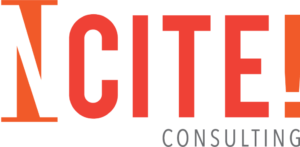You’re six months into your nonprofit’s annual journey. How close are you to achieving your mission-driven goals? A midyear checkup serves as your strategic compass, helping you navigate the path between your January aspirations and December achievements.
Think of a midyear checkup as your organization’s vital signs assessment. It’s the perfect time to:
- Measure progress against key objectives
- Identify potential roadblocks
- Celebrate early wins
- Make course corrections while there’s still time
This strategic pause isn’t entirely about numbers and metrics – it’s about ensuring your nonprofit stays aligned with its mission and maintains momentum. Whether you’re tracking donor engagement, program effectiveness, or staff satisfaction, a thoughtful midyear evaluation provides clarity and direction.
Ready to maximize your impact? Let’s explore how to conduct an effective midyear assessment that keeps your nonprofit moving forward with purpose and precision.
The Importance of Midyear Assessments
Midyear assessments are crucial for nonprofit organizations to stay on track and achieve their strategic goals. These evaluations provide a structured opportunity to identify potential obstacles, celebrate successes, and adjust strategies before year-end challenges start to feel unmanageable.
Key Benefits of Regular Midyear Reviews:
- Strategic Alignment: Board of directors can assess if current initiatives align with the organization’s mission and make data-driven decisions for resource allocation
- Financial Health: Early detection of budget variances allows for timely adjustments in spending patterns and fundraising strategies
- Team Performance: Regular check-ins boost employee engagement and provide opportunities to address burnout before it impacts productivity
- Program Effectiveness: Data-driven evaluation of program outcomes helps identify areas for improvement and innovation
A strong midyear assessment enables organizations to:
- Track progress against annual goals
- Identify emerging opportunities
- Address resource gaps
- Strengthen stakeholder relationships
- Adapt to changing community needs
Nonprofit leaders who embrace regular midyear evaluations show a commitment to organizational excellence and sustainable impact. These assessments create a culture of continuous improvement and empower teams to respond proactively to challenges instead of managing crises reactively.
Evaluating Financial Progress: A Key Component of Your Midyear Checkup
A strategic financial review at midyear empowers organizations to make data-driven decisions and necessary course corrections. Let’s explore three critical areas that demand attention during your financial assessment:
Budget and Spending Analysis
A thorough budget review reveals opportunities for optimization:
Income Streams
- Track revenue patterns against projections
- Identify unexpected income fluctuations
- Document successful revenue-generating initiatives
Expense Management
- Flag areas of overspending
- Spot underutilized budget allocations
- Create specific reallocation plans for identified surplus funds
- Research cost-saving alternatives for high-expense categories
Adapting Strategies for Success: Realigning Efforts Towards Goal Achievement
Proactive management is essential for successfully achieving goals. Instead of waiting until the end of the year to see if they met their objectives, effective nonprofit leaders take action in the middle of the year to make sure their organization is on the right track.
Key Areas for Strategic Realignment:
Resource Allocation Review
- Examine current budget distributions
- Identify underutilized resources
- Shift funds to high-impact initiatives
Team Performance Optimization
- Reset performance metrics
- Address skill gaps through targeted training
- Strengthen cross-departmental collaboration
Process Refinement
- Streamline workflows that show bottlenecks
- Update outdated procedures
- Implement automation where beneficial
Successful realignment requires a balanced approach across multiple organizational dimensions. Consider creating a Priority Matrix to categorize initiatives:
 High Impact/Low Effort: Quick wins to implement immediately
High Impact/Low Effort: Quick wins to implement immediately
High Impact/High Effort: Strategic projects requiring careful planning
Low Impact/Low Effort: Nice-to-have improvements
Low Impact/High Effort: Items to reconsider or postpone
This systematic approach helps maintain focus on mission-critical objectives while ensuring efficient resource utilization. Organizations that master the art of strategic realignment often find themselves better positioned to achieve their year-end goals and create lasting impact in their communities.
Remember to document your realignment decisions and communicate changes clearly to all stakeholders. This transparency builds trust and ensures everyone moves forward with shared understanding and purpose.
Final Thoughts
A midyear checkup is a powerful tool for transformation and growth. This strategic pause in your journey allows you to celebrate wins, address challenges, and plan for the future. By making regular assessments a habit, you and your organization can adapt to changes instead of scrambling to catch up at the end of the year.
Your commitment to this process is important. Each evaluation strengthens your foundation for success and creates momentum for positive change. Whether you’re fine-tuning financial strategies, improving wellness programs, or pursuing ambitious organizational goals, your midyear checkup guides you toward your desired destination.
Take action today. Schedule your midyear assessment, gather your team, and analyze the data that will guide your next steps. Remember: this isn’t about judgment—it’s about growth. Your willingness to reflect, adjust, and move forward with intention will shape not only the rest of this year but also your long-term success.
If you’d like some support with this process—or help getting clarity on your next move—I’m just a phone call away.

